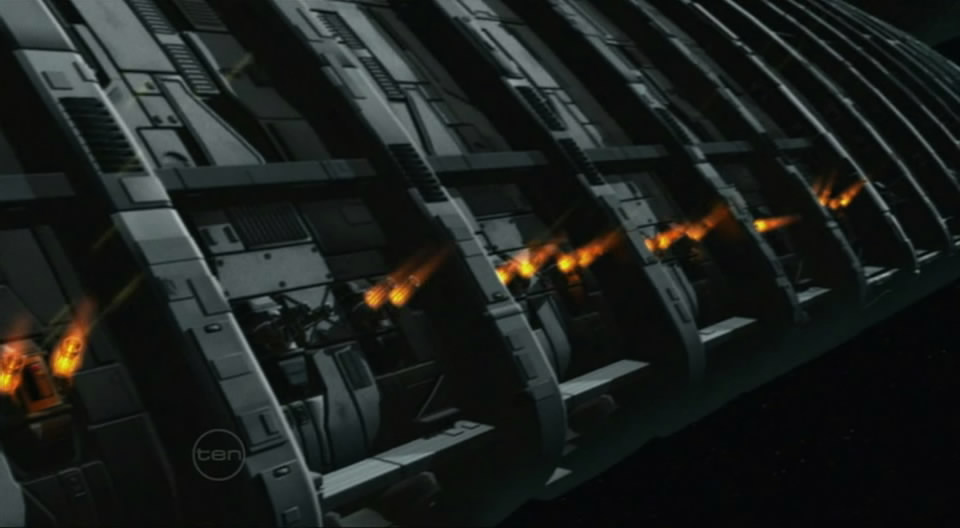Technically, this is a trope-a-day from much later in the cycle, but seeing as (a) I just wrote it up having been thinking about it recently, (b) I’m sure at least some of my readers have been wondering about the very common use of reaction drives in the Eldraeverse ever since I first mentioned vector control, and (c) among those are the ones wondering how (and if) I avert running smack into Burnside’s Advice in the worst possible way. So:
Reactionless Drive: The important thing to remember about a reactionless drive is that it’s not reactionless.
A vector control drive is a member of the entire family of vector-control technologies, and like all the other members of said family, it obeys Newton’s Third Law. Vector control used for artificial gravity transfers the reaction to the action it’s applying to the stuff between the gravity rotors to the structural framework it’s bolted to. Vector control used in tractor/pressor beams pushes the party of the first part every bit as much as it pulls the party of the second part, and on the precisely opposite vector. And a vector control drive, while it utilizes extremely fancy ontotechnological trickery to spread the reaction to the action out across all the ambient mass in appropriately vast volumes (if not the entirety of, but that’s real hard to measure) of the local universe, is absolutely no different in this respect.
What you get from a vector control drive is not needing to haul all those vast quantities of reaction mass around with you. Note: only the remass. Vector control drives still need fuel, and since there are certain inevitable inefficiencies in coupling the action to the reaction quite so indirectly, they need significantly more fuel than an equivalent reaction drive. You aren’t getting away from having those huge spherical tanks of D and He3 strapped to the back of your starship that easily.
Another thing you might get is a degree of, um, stealth, inasmuch as you don’t have the huge bright drive flare that most reaction drives tend to produce. Of course, as we all know, there ain’t no Stealth In Space, because apart from your life support’s comfortable temperature alone making you stand out like a lighthouse against the 3K sky background, you’re also running a bloody great reactor (and radiating its heat) to power your vector control drive.
In short: the existence of vector control permits you to build something damned close to a classic SFnal reactionless drive. It provides you with rather fewer reasons as to why you might want to, outside a few highly specialized edge cases.
(Side note: the mad scientists out at Resplendent Exponential Vector have also been experimenting along the lines of the Alcubierre drive to get reactionlessness and a working fittler in one package. After their prototype vaporized a fortunately-spare dwarf planet and exploded first time out, their tort insurers have been reluctant to cover further development at a price they can afford.)

